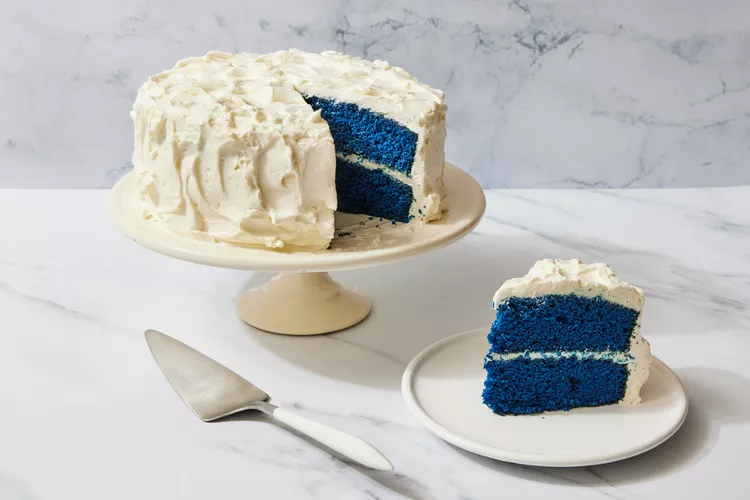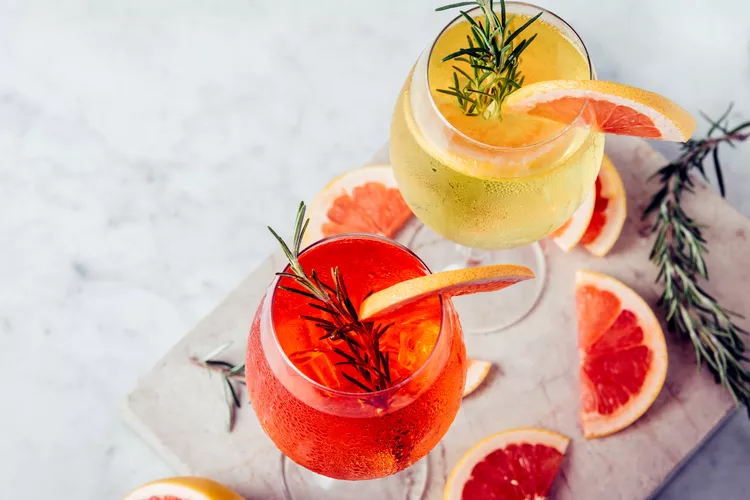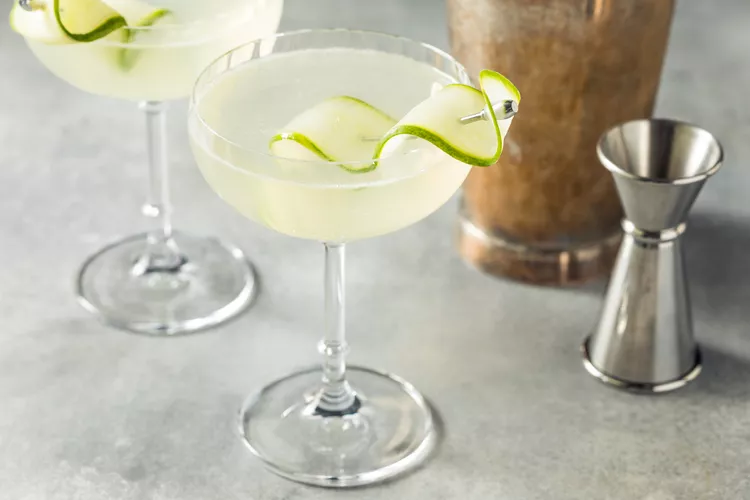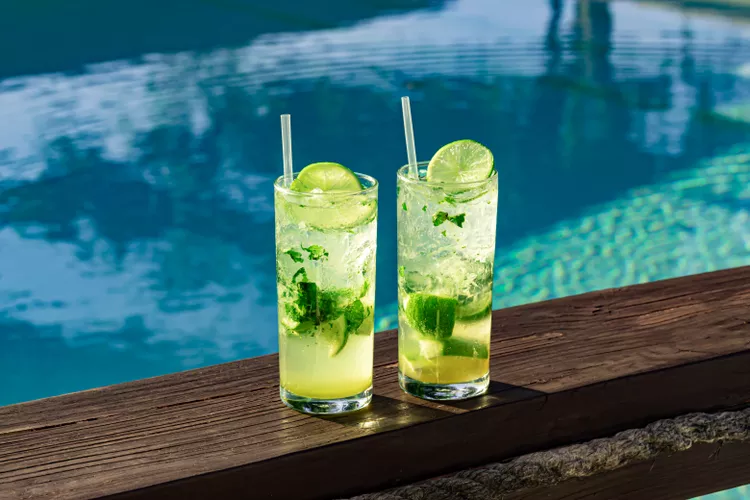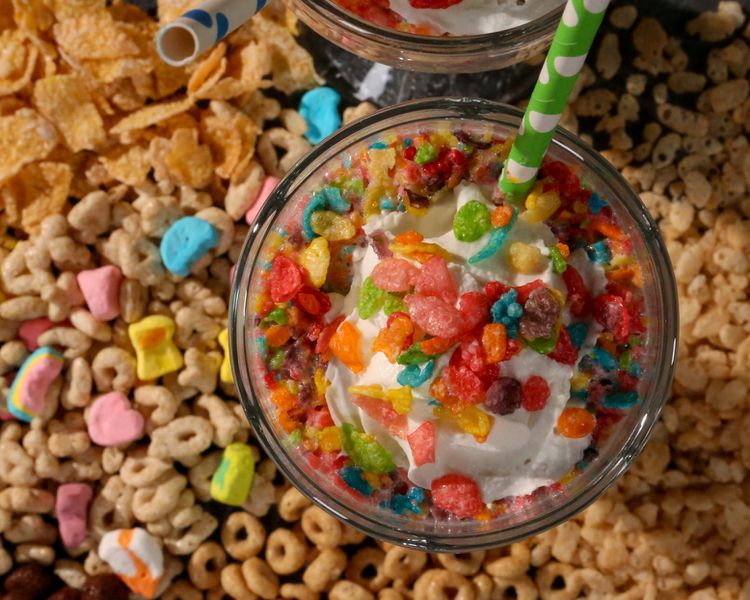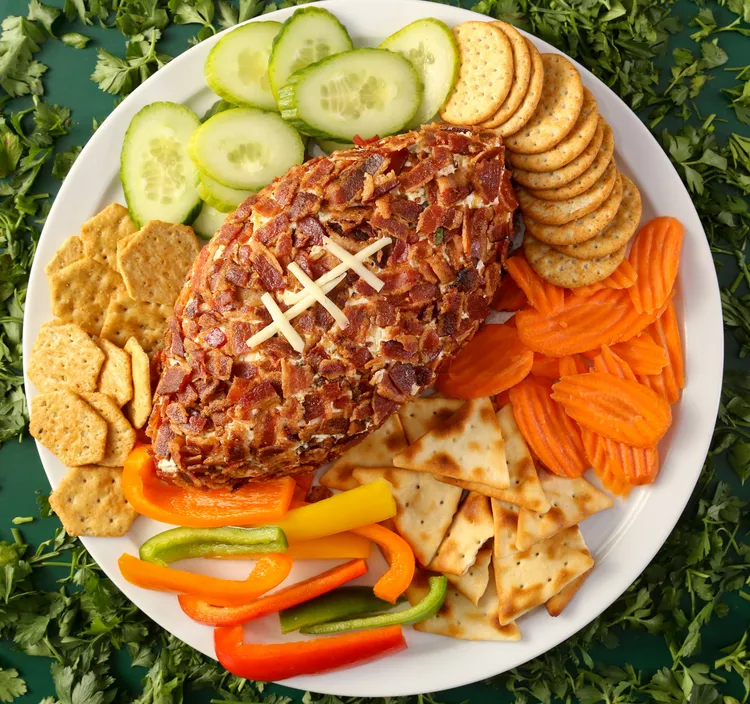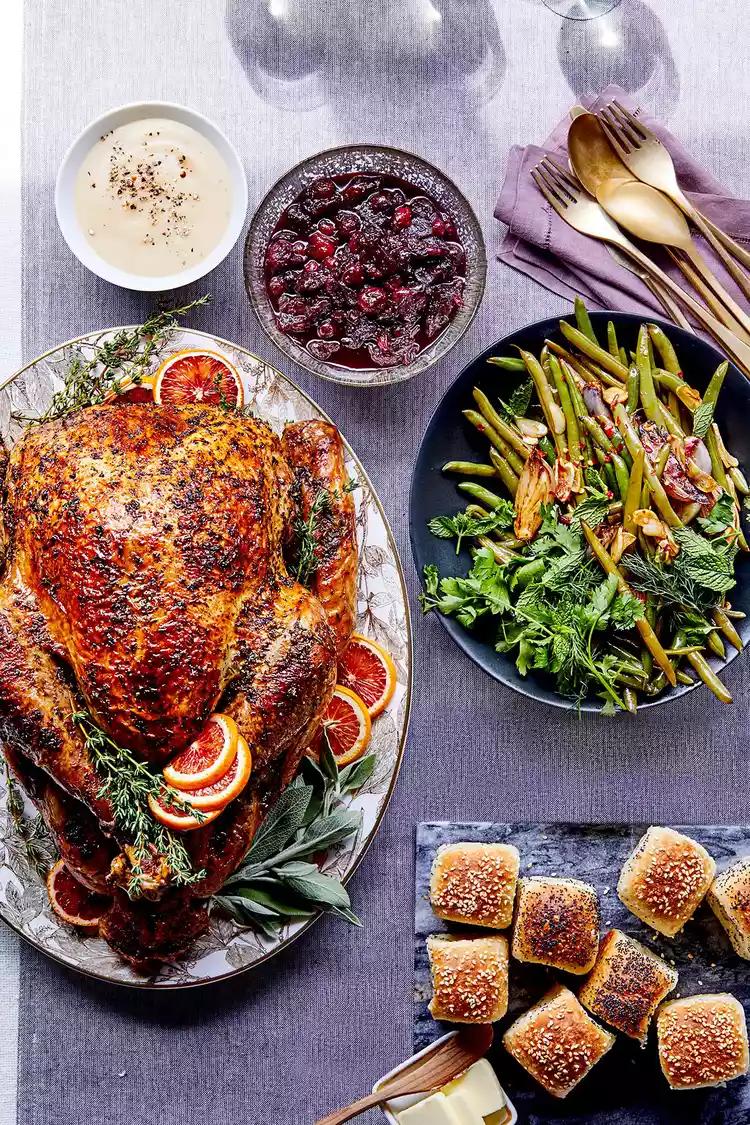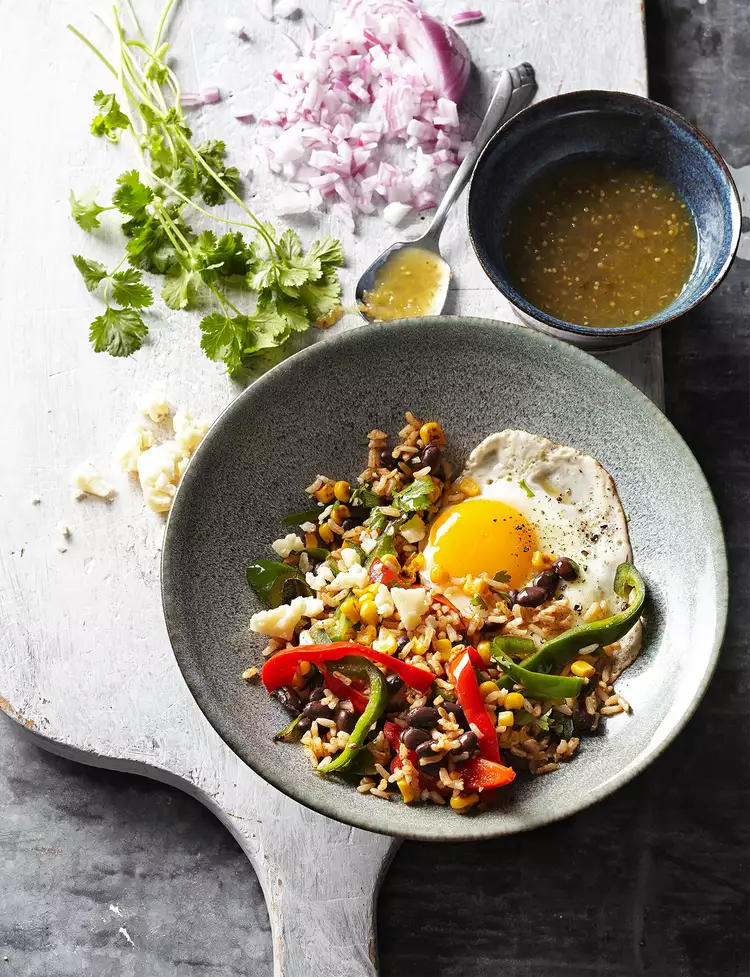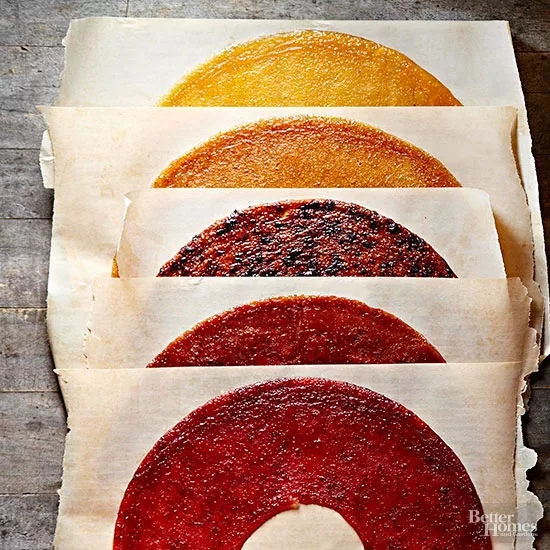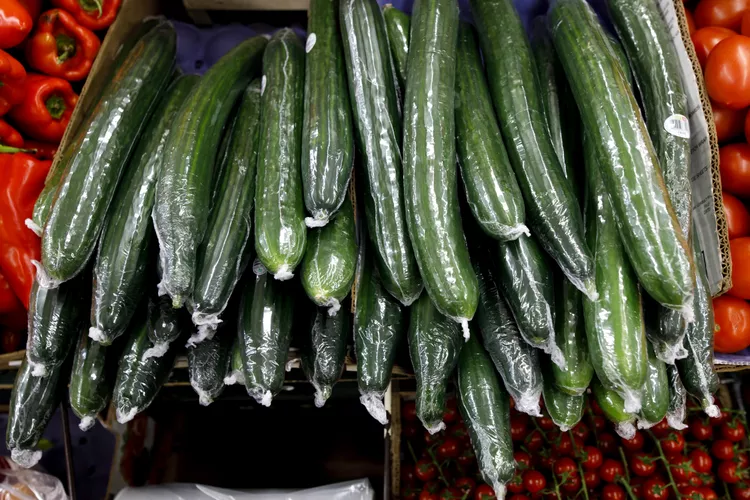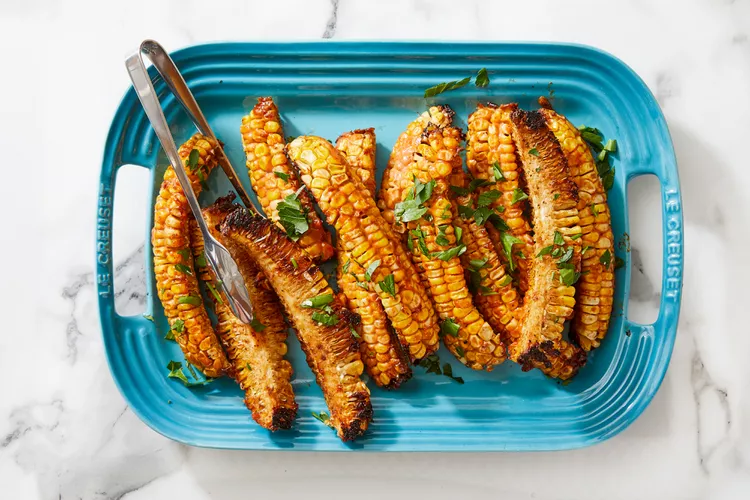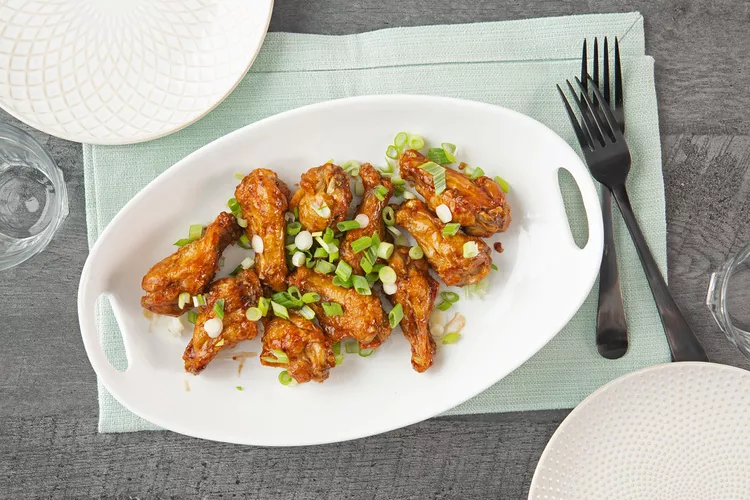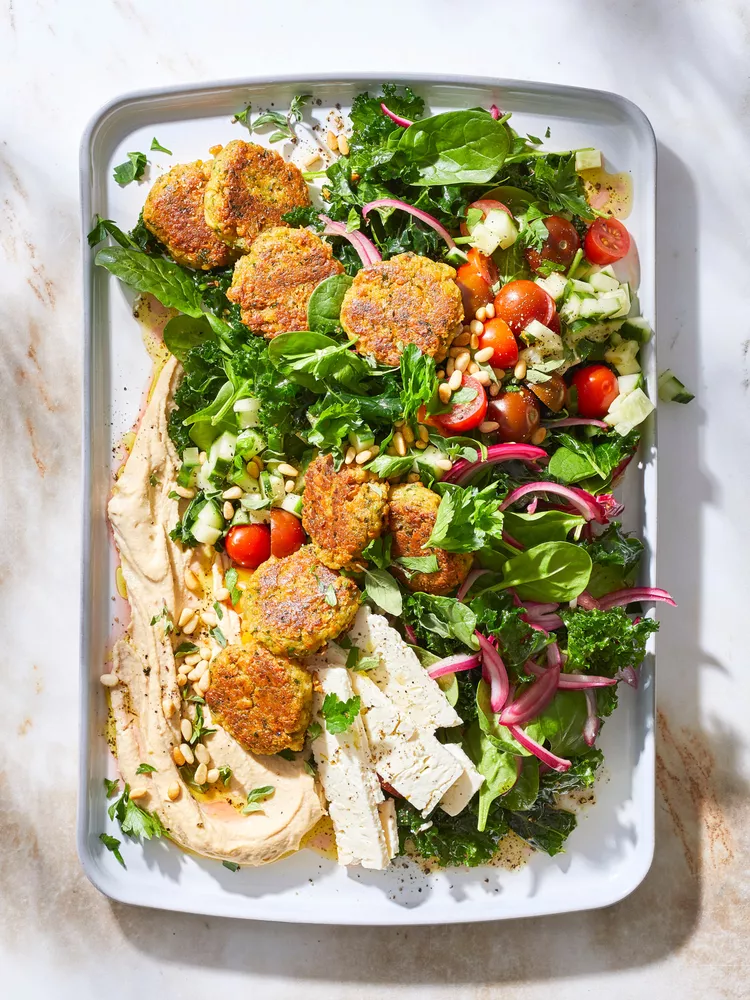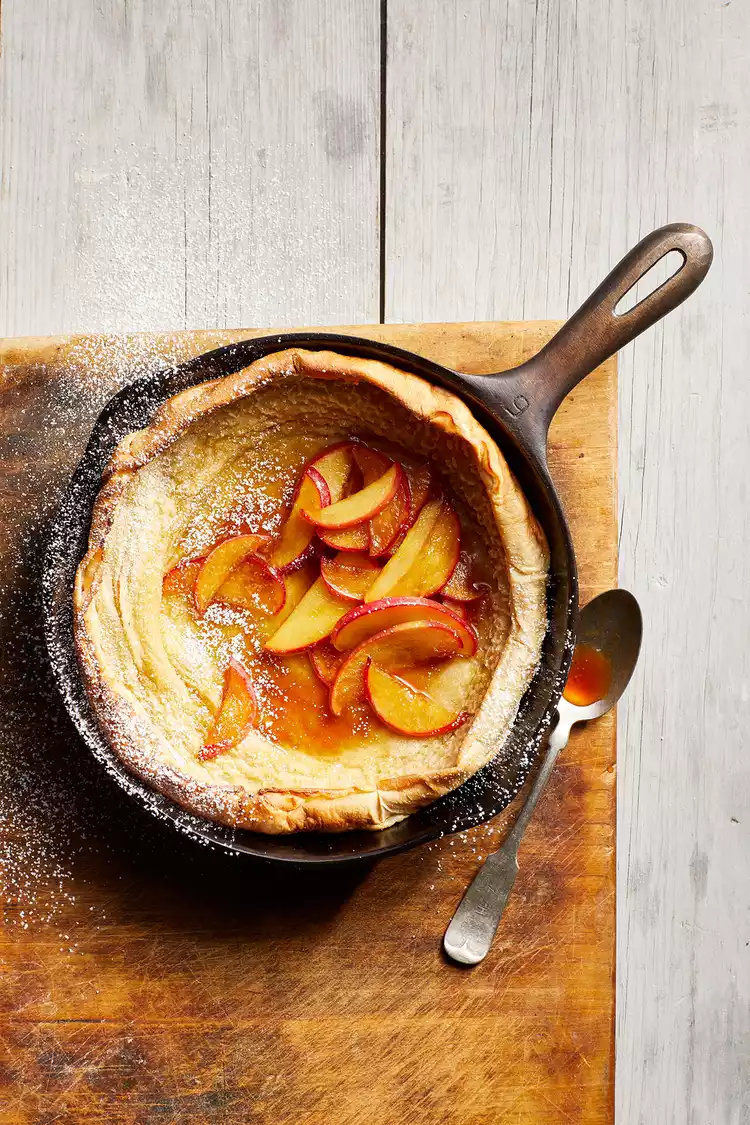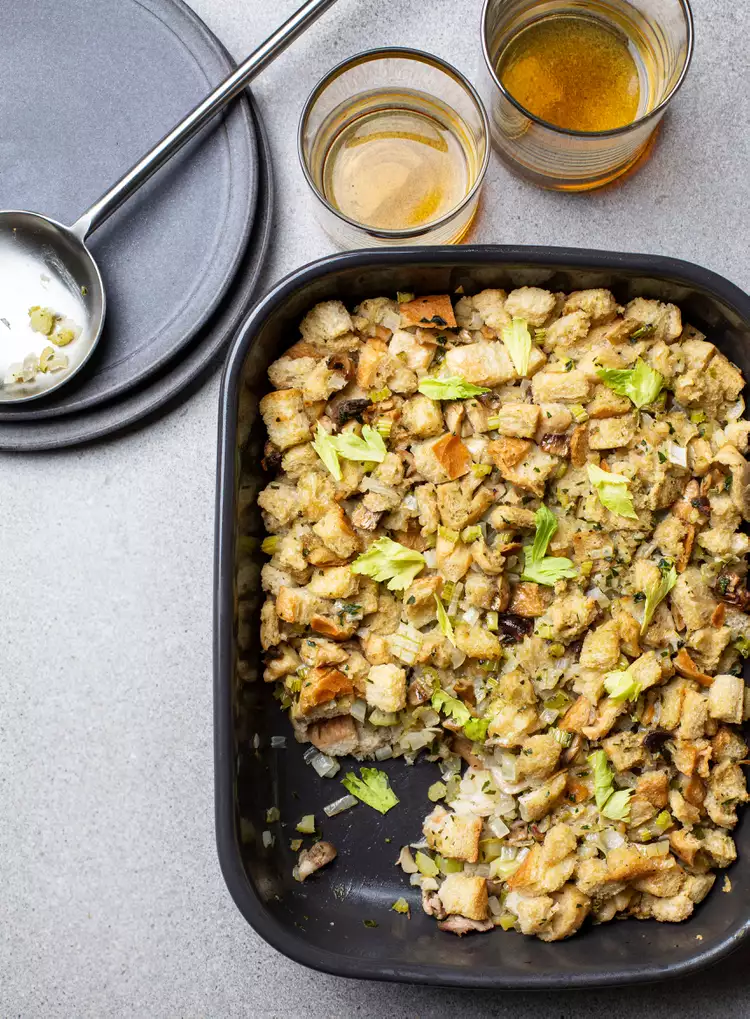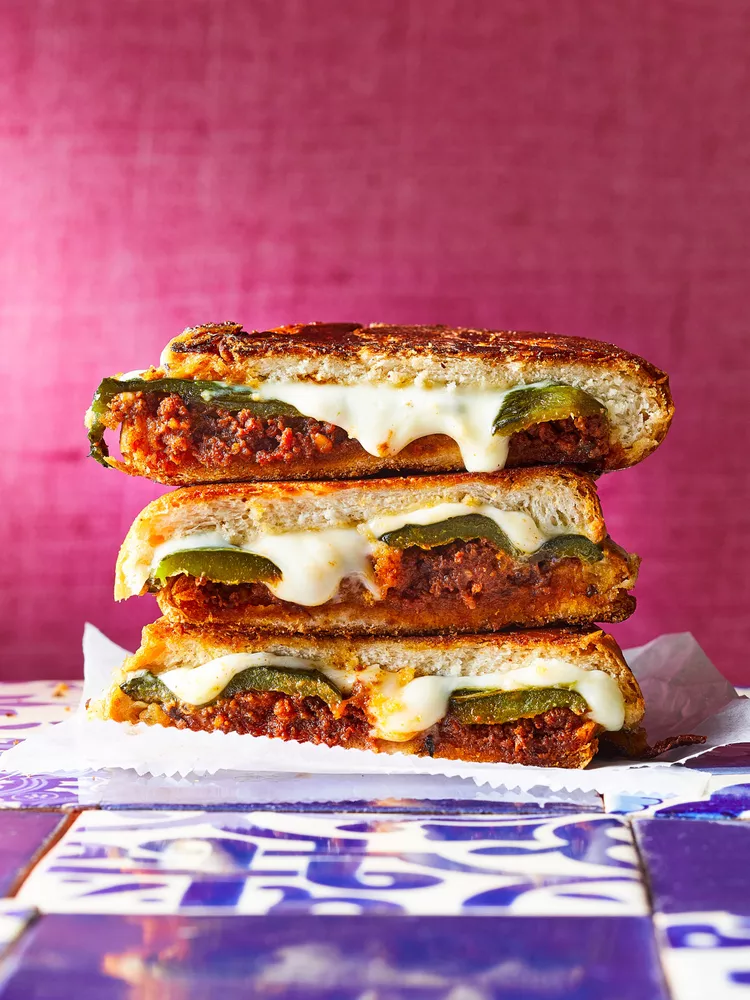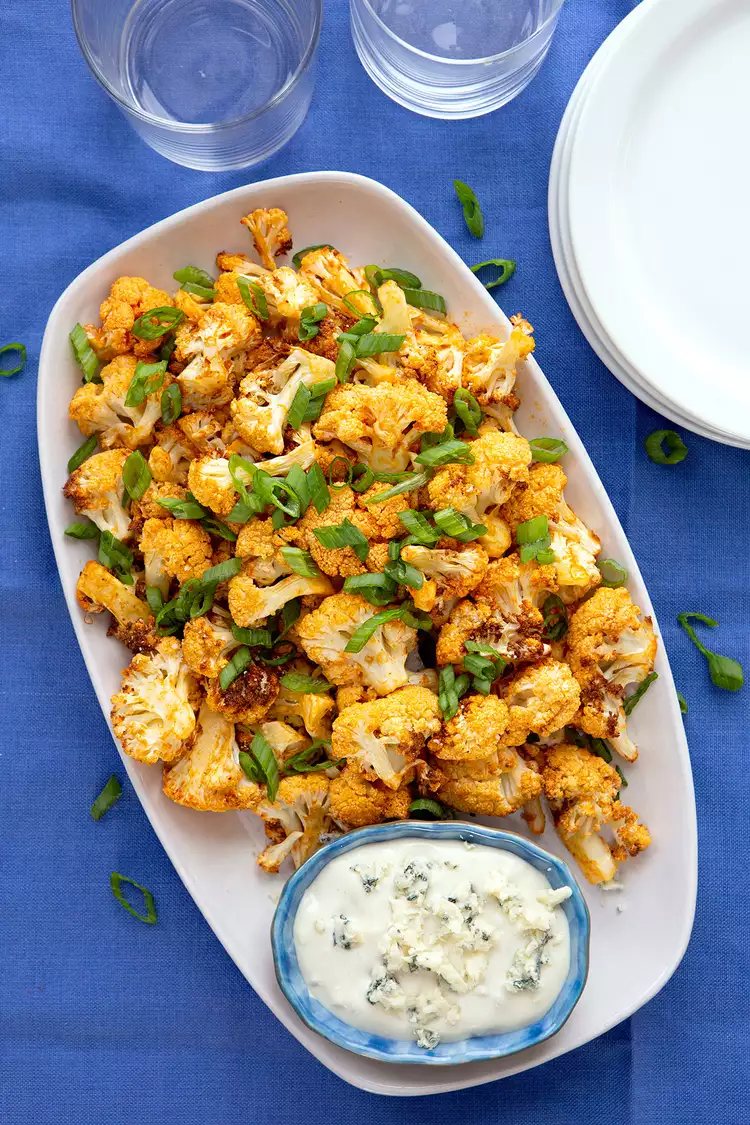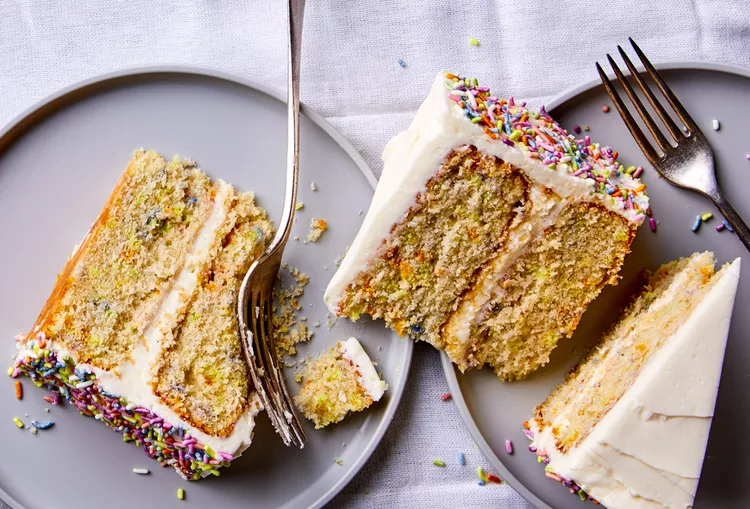Charcuterie boards have been party staples for years, and we can see why. We can't get enough of the selections of meat, cheeses, olives, and more. It's the perfect recipe for entertaining because everyone can pick their favorites. But with summer and warmer weather here, we wanted a refreshing and vibrant take on the classic cheese board. Enter salad boards. We're swapping the meats and cheeses for lettuce, veggies, and salad dressing. Don't forget the croutons!
What Are the Elements of a Salad Board?
Here's a quick look at what you'll need to build a salad board at home.
The Essential Serveware
To create a salad board, you'll first need a few serving pieces and silverware to create the display. Choose a large board to serve as the base. We love the look of rustic wood against green of the lettuce and colorful veggies. You also need small tongs, cocktail forks and/or picks, small bowls, small spoons, and small carafes.
Lettuce
There are so many different lettuces that work when making a salad board. Choose lettuce varieties that naturally form cups and vessels. You can even cut iceberg lettuce or romaine into small wedges for dipping. Other options include Belgian endive, butterhead, Little Gem (such as Red Gem, Green Gem, red oak leaves, green oak leaves, Red Tango, Green Tango), or radicchio.
Veggies
Get creative with your favorite veggies, or whatever's freshest at the farmers market. We chose a variety of colorful vegetables including avocado, blanched Broccolini, carrots, celery, cherry tomatoes, grilled zucchini, mini bell peppers, peas, Persian cucumbers, snow pea pods, watermelon radish.
Toppings
There are a few different types of toppings that make a great salad board.
- Crunchy: Crispy chickpeas, croutons, Marcona almonds, or pretzel bites
- Cheese: Cheddar, chèvre (try rolling your goat cheese log in everything bagel seasoning before adding it to the platter), Cotija, crumbled blue, feta, Parmesan, shredded Asiago, and Swiss
- Dried Fruit: Blueberries, cherries, chopped apricots, or cranberries
- Extras: Fresh herbs (dill, oregano, thyme), lemon wedges, and pitted olives (Beldi, Castelvetrano, Kalamata, Manzanilla)
Dressings
Use whatever dressings you like. We like to include a variety of both creamy dressings and vinaigrettes. Try Green Goddess, Italian Vinaigrette, or Ranch Dressing.
How to Build a Salad Board
Assembling a salad board is as easy as layering ingredients on a platter. There's no need to make homemade dressings—but we're including our favorite recipes if you'd like.
- Start with the Serving Dishes: Start by placing your large board where you plan to serve the party appetizer. You can move it once it's been assembled, but we find it's easiest to create the platter right where you plan to eat. Once the board is down, layer on the bowls you plan to use to hold toppings or dressings. We like to keep the croutons in bowls so they don't become soggy.
- Add Lettuce: Place your lettuce on the board. Keep the types of lettuce together in groups. It's makes a statement visually and allows diners to grab exactly which type they'd like.
- Layer on Veggies: Fill in the spaces on the board with chopped veggies. Again, keep the veggies grouped by type. Don't worry about making perfect piles, let the vegetables tumble over organically.
- Add Toppings: Fill in any remaining holes with clusters of toppings like dried fruit, nuts, cheese, beans, and more. We placed a bunch of soft herbs (think basil, dill, parsley, and chives) in a large bowl for each grabbing. If you're serving a soft cheese, like goat cheese, keep the log whole rather than trying to crumble it.
- Pour Dressings: Fill the vessels and jars with homemade or purchased dressings. Choose wide-mouth jars so guests can dip their lettuce. We like to include 1-2 creamy dressings and 1-2 vinaigrettes. Try making our Vegan Ranch Dressing, Creamy Dill Dressing, or White Balsamic Vinaigrette. Add serving spoons, tongs, forks, and small plates, and you're ready for entertaining.

